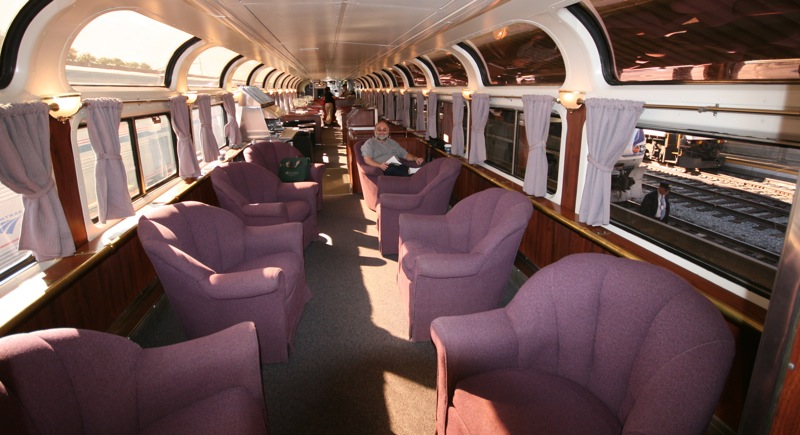Still trying to catch up on this thread, but right now this high-speed railroad is about as definite as the Western River Expedition or Beastly Kingdom. Last I heard, we shouldn't expect a formal announcement for a couple months, or perhaps a conditional approval which gets amended later. The Obama administration is applying a lot of pressure to make this happen, mainly so they'll have something to show for $10 billion plus of "high-speed rail investment" which often paid for studies and other reports on rail systems which will never be built, and portray the new governor as "playing politics" if he rejects the project.
Central Florida and the nation do badly need greater passenger rail development, this just isn't necessairily the right type of service for the Orlando-Tampa market (and decidedly the wrong solution for the link between Disney and MCO, which should properly be a light-rail connection). IF this project goes forward, and again that's hardly assured, expect some major changes before the first train leaves the station - and that would probably be a good thing.
No passenger railway in the world operates without a subsidy (despite false claims to the contrary), and neither would this one. Somebody would be left picking up the tab for the annual operating costs - and it won't be the feds. A dedicated high-speed system also costs a lot more to build and maintain than a higher-speed (say, 110 mph) conventional train on freight shared right-of-way, which would make more sense for the Orlando to Tampa route than the currently proposed HSR.
The "profitable" Northeast Corridor costs the taxpayers more each year than all other nationwide services combined. Where you get a "profit" is that Amtrak has reported (sometimes to tell Congress what it wants to hear...) marginal profits (say, $6) on the ticket price for premium price services like Acela first-class, not for the entire corridor operation, but of course it gets spread around the media as the "profitable" Northeast Corridor. Problem is, it costs several hundred million annually just to maintain the existing Boston-Washington railroad corridor (and those are largely expenses which wouldn't go away even if Amtrak service shut down tomorrow), so having a small percentage of your passengers on one train service on a single route paying "profitable" rates is both meaningless and misleading.
You have the right idea; Incrementally improved, 110-mph conventional trains could (apparently) come within 10-12 minutes (or less, depending on the extent of infrastructure investments) of the dedicated HSR line proposed, but at a fraction of the construction and annual operating cost. In fairness, the existing Silver Star is a New York to Miami long-distance train service which, while certainly available to Orlando-Tampa trips, isn't really aimed at that market. Most of the business is north of Orlando anyway, and there are limits as to how much short-distance business you can handle without "blocking out" the long-distance passenger who wants to go from Miami to Philadelphia.
That's effectively a myth. No train requires "government subsidies for every person that steps onboard above and beyond their ticket price". I know you've probably heard that repeated time and time again until you just take it for granted as factual, but not only is it not true, its a silly argument when you stop to think about it. The more passengers you carry, the more ticket revenue earned, not less, and hence the smaller the operating subsidy required; You do not lose money for each person you carry. It is essentially a fixed cost to run a locomotive and ten cars down the track today, so it is advantageous to carry as many paying passengers as possible. Even if that $140 figure were accurate (it isn't) it is still meaningless; Say you have one passenger travelling 60 miles on a fare of $14, and another going 1,600 miles in first-class for $1,225. It doesn't begin to make sense that the true cost to transport both passengers is the ticket price plus $140.
Incidentally, the Silver Meteor offers all amenities and is a full-service operation. It's not a cruise ship on rails, nor is it on a level with some long-distance trains of the 1950's, but neither is it supposed to be. Oldest equipment is actually from 1948.
We're probably talking about 10-12 minuntes difference between a definitive high-speed train and "conventional" trains (again, at a literal fraction of the cost) on the Orlando-Tampa segment. It all depends on the level of investment in infrastructure. With so many stops the average speed for the high-speed train is slow enough that an express conventional train could, in theory, beat the end-point running times. Again, in theory - but that well illustrates why this should be built as an incrementally improved, existing conventional railway rather than a dedicated High-speed line.






